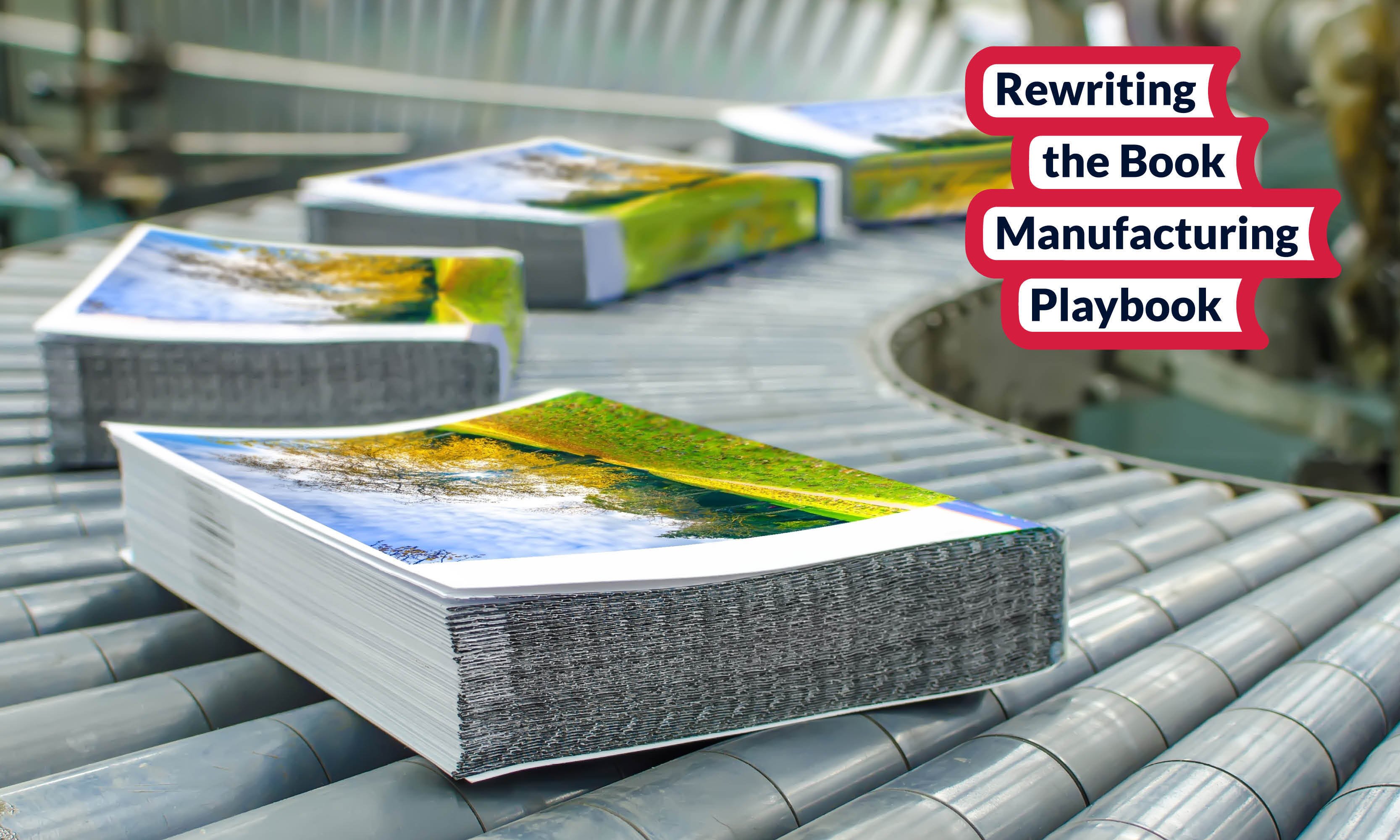Market Changes Require High Productivity

Books aren’t dead, but the rules for making them are changing. Contiweb invited David Zwang to examine shifting demand, shorter runs, and changing supply chains—and what they mean on the production floor—in a multipart series that opens with the broader print market.
Print Market Turbulence Demands Flexible Production
There are a lot of headwinds out there right now, however history has taught us that this too will pass. Demand is still strong in various sectors of the print economy, however the headwinds and market shifts demand production flexibility. And while resignations continue to outpace new hires, it offers a perfect time and opportunities to retool.
Print and especially packaging will continue to grow as long as there is economic growth. The last decade has seen a record expansion of consumerism with current global spending at annual growth rate of about $35 trillion (€ 30 trillion) per year, and projected to reach about $64 trillion (€ 55.3 trillion) by 2030 according to Brookings. That growth, driven by the growth of the global middle class translates to about 1/3 of the global economy.
From Consumer Behavior to Automation
Along with that growth we are seeing purchasing habits change, and they will continue to change. Cloud implementations are growing at an incredible rate. According to Grandview Research, “the global cloud computing market size was valued at USD 483.98 billion (€ 418.4 billion) in 2022 and is expected to grow at a compound annual growth rate (CAGR) of 14.1% from 2023 to 2030”.
Online shopping has been growing and it is projected that it will drive 24% of all global retail in 2025 and be affected by 85% of global consumers. If you add the increased SKU proliferation, a result of the segmentation of the larger consumer base, this challenges the existing methods of production and supply chain. All of this drives the need to streamline and automate production and business systems to meet the new market requirements, and will continue to bode well for print, but digital print in particular. This growth will vary based on the print and packaging applications.
Book Printing and Packaging on the Rise
While there were those that thought printed books were dead, the reports of its demise were greatly exaggerated! Considering, in the U.S., Barnes & Noble opened 60 book stores last year and will open another 60 stores this year, we will need a lot of new production to fill those shelves. Most of the book production solutions were designed to work with shorter run lengths and quick turns through the use of significant automation, to satisfy the realities of today. Digitally printed books are expected to continue to see high double digit growth.
Commercial Print in specific applications like digitally printed direct mail is expected to see mid-range double digit growth of, while other areas will see some modest growth, but lower by comparison. While the continued growth of consumerism will help drive the growth in packaging production. Packaging growth is Estimated at USD 1.14 trillion in 2024 and expected to reach USD 1.38 trillion (€ 1.19 trillion) by 2029, at CAGR of 3.89%. So demand is still strong in various sectors of the print economy, however the headwinds and market shifts demand production flexibility.
Automation, Sustainability, and Inkjet Adoption
The drivers for growth include shorter runs and faster turn times, and have also been driven by the need to control costs, inventories and now increasing sustainability goals. All of these can be supported by digital and inkjet printing and automation technologies. Even with all of these new requirements, production inkjet adoption and use is lower than you might expect. And while it varies by application, trying to identify and accurately measure the global addressable market and adoption rate is difficult, since inkjet application development and use continues to expand and further segment.
During this period, while all of these exciting developments, adoption and growth has been occurring, time hasn’t stood still. The markets, along with many other new challenges have been evolving as well. Some of these challenges and changes are market based and some are inkjet and technology inflicted, and they will continue to individually and collectively stimulate adoption.
Labour, Partnerships, and Automated Workflows
As the market continues to change in countries around the world, connectivity, distribution and support partnerships that best support customers and partners will be key. While each of the manufacturers brands, products and developments will remain with each respective company, we do expect increased collaboration on future products, especially in the area of automation. Today, more than ever, looking at complete automated workflows is a very timely topic considering the growth and impact of production inkjet technology combined with the demands of labor and cost pressures, and quick turn arounds.
The availability of skilled labor may be the biggest driver to production inkjet and increased automation adoption. Between the post pandemic ‘great resignation’ and rising labor costs, finding and training skilled offset and even flexo press operators is becoming a challenge. Add to this, that in the U.S. we are faced with an inescapable demographic cliff heading our way in 2026, when 500,000 fewer first-time workers are entering the work force, thanks to a steep decline in births since the 2008 economic recession. While U.S.-specific, similar pressures are evident worldwide.
Production automation and integrated supply chains offer a longer term solution to address each of these issues. Highly automated production, digital print, and especially production inkjet are poised to be an integral part of that solution. The modular nature of inkjet imaging technology, are providing opportunities to address existing markets, new markets and segmentation.
Technology Integration and the Future of Inkjet
The development of new and upgraded models and use of roll fed production flexo and inkjet presses continue, even with the increase in sheetfed inkjet presses. These are increasing as a result of more flexible production scenarios and applications with presses connected to highly automated feeding and finishing solutions. In fact, we are seeing many more integrations with multiple vendor finishing solutions all in line, and even multiple press vendors feeding a shared finishing line! These all help satisfy the needs of the shifting print market and the addition of many new print applications.
David Zwang travels around the globe helping companies increase the productivity, margins and market reach of firms in the fields of publishing and packaging across the globe. He is currently the Chairman of the GWG (Ghent Workgroup) and sits on many national and international standards bodies.




